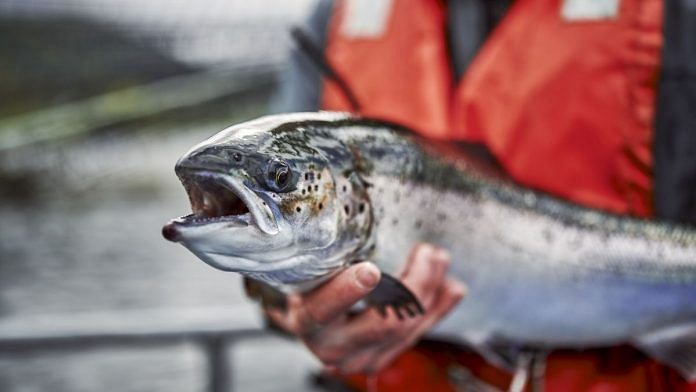Sydney: The salmon farms in the far south of Australia, where icy winds roar in from Antarctica, seem an unlikely casualty of global warming.
But as tropical waters flow further south, ocean temperatures are rising even around the island state of Tasmania — stressing fish and stunting their growth. That’s prompting companies like Huon Aquaculture Group Ltd. and Tassal Group Ltd. to find new ways to mitigate the impact of climate change.
Both belong to an industry and government partnership that’s selectively breeding fish to tolerate the warmer waters. Huon is experimenting with “fortress pens” to withstand wild weather so it can farm further offshore where the water is colder. It’s a further sign that agriculture in all its forms must adapt to survive human-induced climate change — from breeding heat-tolerant cattle in Florida to growing salt-resistant crops in Egypt.
While Australia represents only about 2% of worldwide salmon production, the nation is providing valuable lessons to a global industry worth $15.4 billion. Huon’s pen designs are being studied by salmon producers as far away as Norway and Chile, according to Deputy Chief Executive Officer Philip Wiese.
“There’s a lot of interest in that technology,” said Wiese. “People like coming to visit us because we are on the forefront of change in the industry.”
Warmer Waters
Tasmania’s salmon farmers are facing a serious problem. Surface waters have warmed by two degrees Celsius in the past 60 years, and will rise another three in the next half century as a tropical current running down Australia’s east coast brings warm water to the deep south, according to government forecasts. Marine heatwaves that have stunted fish growth in two of the past five years will become more prevalent, government scientists say.
The salmon industry’s selective-breeding program, overseen by the Commonwealth Scientific and Industrial Research Organisation, is having some success.
Waters in a test hatchery are warmed to see which fish are thriving despite the stressful environment, and they’re sent to farmers’ test pens. DNA samples of fish that grew more, and had a higher tolerance to a disease that’s prolific in farmed salmon, are sent back to the hatchery. Those families are then selected for commercial production.
The program has improved growth rates and tolerance to amoebic gill disease by more than 10% in every three-year breeding cycle since it began in 2004, according to the CSIRO.
Salmon farmers are also shifting production from sheltered inlets to further offshore. That’s partly being driven by the state environment regulator halving the production cap in Macquarie Harbour on Tasmania’s west coast to prevent the estuary from collapsing from over-farming.
But the geographic shift is also prompted by the search for cooler waters. And it’s a risky move.
Also read: What you’re not eating is killing you
Damaging Storms
Work can’t be done in harsh weather and pens can be destroyed by violent storms. Huon lost 120,000 fish last year when six-meter waves and wind gusts in excess of 100 kilometers per hour from the Southern Ocean tore through the aptly named Storm Bay.
Huon spent two years developing a twin-net pen, at a price of A$1 million apiece, to withstand the weather and keep seals out. Moorings help anchor an outer predator net as far as 7 meters from the inner net, which contains the fish. The company said it’s working with global equipment suppliers to export the technology to Norway and Chile.
Tassal, which also has a lease in Storm Bay, is developing “sanctuary” pens to keep seals out. The company, Australia’s largest salmon producer, is also investigating farming off King Island in the Bass Strait, a notoriously rough stretch of water, according to its 2018 sustainability report. The company didn’t respond to requests for comment.
The climate mitigation efforts appear to be working. Tassal sees gradual growth in salmon production from about 33,000 tons last financial year, according to company filings. Huon expects production to climb almost 60% in the next two years from just under 19,000 tons in the 12 months ended June 30.
It’ll only happen if the fish aren’t stressed, said Wiese, overlooking a pen as salmon jumped out of the water. “Happy fish, happy customers.”
Also read: Don’t go by global Red List on animals at risk. They mislabel many






